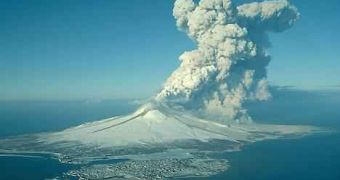Lead by Adam Bourassa from the University of Saskatchewan, a team of researchers recently investigated how small-scale volcanic eruptions could help us counteract global warming.
The decision to look into this issue came as a direct result of their realizing that, soon after massive volcanic eruptions, the aerosols released into the atmosphere block out the sun and therefore significantly cool off the areas close to where the eruption took place.
Apparently, their plan is to resort to the same principle in order to fight back climate change and global warming.
However, as explained on the University of Saskatchewan's website, in order for aerosols to be efficient in blocking out sunlight, they need be sent all the way up into the stratosphere.
Professor Adam Bourassa says that, “If an aerosol is in the lower atmosphere, it's affected by the weather and it precipitates back down right away. Once it reaches the stratosphere, it can persist for years, and with that kind of a sustained lifetime, it can really have a lasting effect.”
Given the fact that calm stratospheric layers are found at altitudes varying from 10-17 kilometers, science might have another problem on its hands should it decide to send aerosols at such heights.
However, it seems that nature offered us a solution for this as well: powerful storms, monsoons in particular, are now proven to be able to penetrate our planet's stratosphere.
As one can easily guess, this means that we can use them to send said aerosols at their required heights.
Interestingly enough, these researchers are not the only ones who looked into the possibility of “polluting” our air with something which might actually help us, rather than do us wrong.
Thus, not very long ago we reported on a researcher's plant to have balloons filled with various chemical compounds flown into the atmosphere and then made to sun-proof the earth by releasing said substances into the air.

 14 DAY TRIAL //
14 DAY TRIAL //